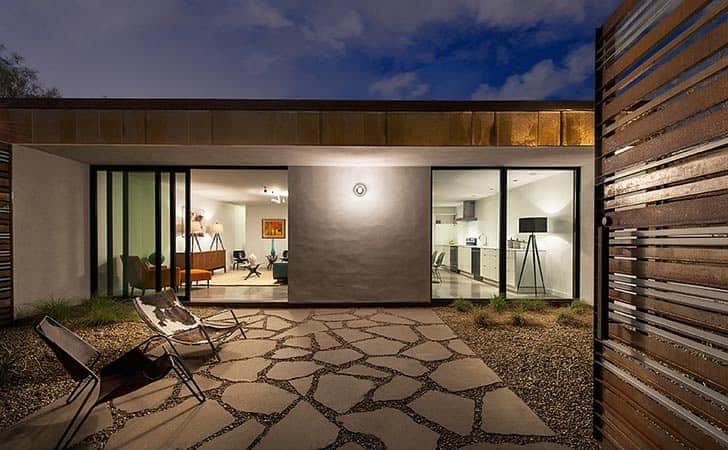
Biomimicry and the Desert Home
Austin Trautman | Jun 30, 2017
An avid outdoorsman and Seattle native, VALI Homes founder and current Arizona resident Austin Trautman struggled to find beauty in what appeared to him a dry and lifeless landscape. Yet after a few months of biking, hiking, and camping the Sonoran desert, he developed a profound sense of awe in the life-sustaining structure of native plants and used them as inspiration for building the ideal desert home.
“I follow in building the principles which nature has used in its domain” – Frank Lloyd Wright
Frank Lloyd Wright’s philosophy of balance and biomimicry in the built environment is of particular imperative today as we grapple with a changing climate. Of the 1.8 million residential structures in the Phoenix Metro, scant few exist in harmony with the climate and instead struggle daily through extreme summer temperatures. Built using outdated systems from other climate zones, these structures have inordinately large energy consumption profiles, and attempts to offset consumption involves complex and expensive technologies that sacrifice inhabitants’ comfort. Taking inspiration from Frank Lloyd Wright’s teachings, and the mighty Saguaro cactus, Phoenix-based VALI Homes builds beautiful, livable, and sustainable desert homes.
Attempts to improve the efficiency of traditional residential structures typically involve defensive measures like non-breathable membranes, air sealing, and toxic foams. While these methods result in slightly lower overall consumption, they trap moisture that deteriorates the structures themselves, creates unhealthy interior air quality, and eventually harms inhabitants’ health. Up until recently other systemic and more efficient building standards, like Passive House, had not been attempted in the Sonoran desert given the region’s extreme summers and corresponding cooling loads. In fact, the Sonoran desert was the only climate zone in the world where Passive House principles had not yet been applied.

Rather than attempting to improve upon outdated structural designs, VALI Homes instead designed an entirely new building system — inspired by the mighty Saguaro and Passive House techniques — that functions with, not against, the Sonoran climate. Through self-shading-and-ventilating shells (like the Saguaro), air-tight construction, super-insulated envelopes, and 24/7 fresh air and water purification, VALI Homes boast the healthiest, most peaceful interiors yet use 1/5 the energy of similarly sized regular houses. Given their relatively tiny energy footprints, they need commensurately tiny photovoltaic and battery systems to achieve net-zero, and even off-grid, status. In fact, the first-built VALI home was just awarded Living Building Challenge Net Zero Energy Certification from the Living Future Institute; the 1500 sf, 2-bedroom home generated 107% of its 2016 energy needs with a relatively small 3.6 kW rooftop solar system — all while maintaining optimal year-round comfort. It is the only residential structure in the Southwest to receive this designation, and among the most energy-efficient buildings in the world.
Beyond their modernist DNA, VALI Homes are a total rethink of how a desert home should be constructed for maximum homeowner health, and minimal environmental impact. They are truly a modern-day example of how the teachings of Frank Lloyd Wright have more application today than ever before.


All photos courtesy of VALI Homes


